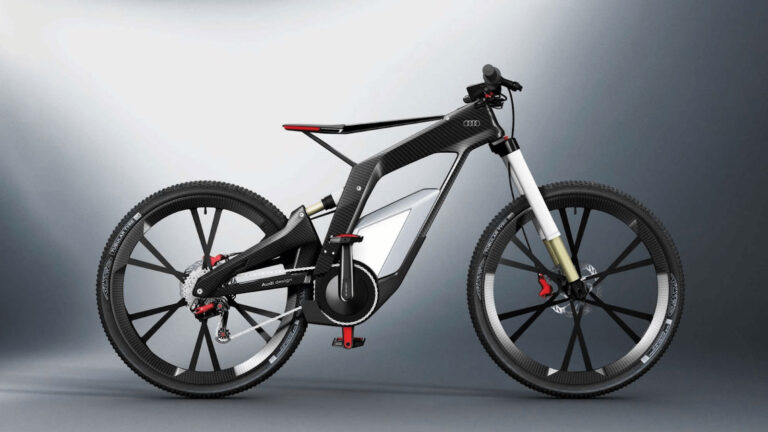Electric Bike Charging Stations
Electric bikes, also known as e-bikes, are taking the world by storm. With their eco-friendly nature, cost-effectiveness, and health benefits, it’s no wonder that more and more people are hopping on the electric bike bandwagon. As the demand for electric bikes continues to surge, so does the need for adequate charging infrastructure. That’s where electric bike charging stations come into play, providing a vital support system for e-bike riders.
Electric bikes have gained immense popularity in recent years due to their numerous advantages. One of the standout benefits is their positive impact on the environment. Unlike conventional motorcycles or cars, electric bikes produce zero tailpipe emissions, contributing to cleaner air and a greener planet. By opting for electric bikes, riders are actively reducing their carbon footprint and promoting sustainable transportation solutions.
But it doesn’t stop there. Riding an electric bike can also lead to substantial cost savings. With rising fuel prices and the ever-increasing costs associated with owning a conventional vehicle, electric bikes offer a budget-friendly alternative. Charging an e-bike is significantly cheaper compared to fueling up a gas-powered vehicle, making it an attractive option for daily commuting or leisurely rides.
Health benefits are another compelling factor driving the popularity of electric bikes. While some may argue that e-bikes do not require much physical effort, studies have shown that riders still experience moderate exercise and enjoy the cardiovascular benefits of cycling. Electric bikes provide a perfect solution for those who may have physical limitations or prefer a less strenuous workout. They encourage an active lifestyle by making cycling accessible to a wider range of individuals.
However, for electric bikes to truly thrive, a robust network of electric bike charging stations is essential. Just like electric cars, e-bikes require charging infrastructure to support their growing user base. Having dedicated charging stations strategically placed throughout cities, neighborhoods, and popular destinations ensures that riders have a reliable means to charge their bikes conveniently. These charging stations act as the lifeblood of the electric bike ecosystem, eliminating range anxiety and empowering riders to confidently explore their surroundings.
In the upcoming sections of this blog post, we will delve deeper into the importance of electric bike charging stations, explore different types of charging infrastructure, and discuss how to find these stations in your area. We will also touch upon charging etiquette, infrastructure development efforts, and exciting trends and innovations in the world of e-bike charging. So, hop on your electric bike, and let’s dive into the electrifying world of electric bike charging stations!
Check Out Our Electric Bike Buying Guide To Find The Perfect Electric Bike
The Importance of Electric Bike Charging Stations
The importance of ebike charging stations cannot be overstated. These dedicated charging stations play a pivotal role in supporting the rapidly growing community of electric bike riders. By providing a reliable and accessible charging infrastructure, they address the range anxiety commonly associated with electric bikes and contribute to the overall success and adoption of this eco-friendly mode of transportation.
One of the significant advantages of electric bike charging stations is their ability to alleviate range anxiety. Range anxiety refers to the concern of running out of battery power before reaching your destination, which can deter potential e-bike riders from fully embracing this mode of transportation. However, with strategically placed charging stations, riders can rest assured that they have a reliable backup plan. Whether you’re commuting to work, running errands, or embarking on a weekend adventure, knowing that there are charging stations available along your route provides peace of mind and encourages the use of electric bikes for longer trips.
Moreover, electric bike charging stations offer unparalleled convenience and accessibility. Imagine cruising through a bustling city or exploring the countryside on your electric bike, knowing that you can conveniently charge your bike whenever needed. Charging stations placed in prominent locations, such as public areas, parking lots, and popular destinations, make it incredibly easy for e-bike riders to top up their batteries while taking a break or going about their daily activities. This level of convenience encourages more people to adopt electric bikes as a viable mode of transportation, as they no longer need to worry about finding an electrical outlet or being stranded with a depleted battery.
Additionally, electric bike charging stations foster a sense of community and camaraderie among e-bike riders. As these stations become more prevalent, riders can connect and interact with like-minded individuals who share a passion for sustainable transportation. Charging stations often act as gathering points, where riders can exchange tips and experiences, fostering a vibrant and supportive e-bike culture. This sense of community further reinforces the benefits of electric bikes and encourages more individuals to join the electric bike revolution.
Electric bike charging stations are of utmost importance in enabling the widespread adoption of electric bikes. They address range anxiety, providing riders with the assurance that they can conveniently charge their bikes on the go. The convenience and accessibility of these charging stations make electric bikes a practical and viable mode of transportation for daily commutes and recreational rides. Furthermore, they foster a sense of community among e-bike enthusiasts, creating a network of support and encouragement. So, let’s embrace the rise of electric bike charging stations and continue to pedal toward a greener and more sustainable future.
Types of Electric Bike Charging Stations
When it comes to electric bike charging stations, there are several types available to cater to the diverse needs of e-bike riders. These charging stations come in different forms, including public stations, workplace charging options, and home charging solutions. Each type offers unique features and specifications, ensuring that electric bike riders have convenient and reliable charging options wherever they go.
Public Charging Stations: Public electric bike charging stations are typically found in high-traffic areas such as city centers, parks, and shopping districts. These stations are accessible to the general public and provide a convenient charging solution for riders on the move. Public charging stations often feature multiple charging ports, allowing several bikes to charge simultaneously. They are designed to be user-friendly, with clear instructions and compatible connectors for various electric bike models. Charging speeds at public stations can vary, ranging from standard charging rates to fast charging options that provide a quick boost of power to get you back on the road in no time.
Workplace Charging: Many forward-thinking companies and organizations are recognizing the benefits of promoting sustainable transportation options, including electric bikes. Workplace charging stations cater specifically to employees who commute to work on their electric bikes. These stations are usually located in company parking lots or designated charging areas. Workplace charging not only supports the charging needs of employees throughout the workday but also encourages the use of electric bikes by providing a convenient charging solution during office hours. The charging speeds at workplace stations can vary depending on the infrastructure setup and requirements of the organization.
Home Charging Options: For ultimate convenience, electric bike owners can take advantage of home charging solutions. These options enable riders to charge their bikes in the comfort of their own homes, ensuring that their e-bikes are always ready for the next adventure. Home charging typically involves installing a charging unit or using a standard electrical outlet with an e-bike charger. The charging speed at home depends on the power output of the charging unit and the e-bike’s battery capacity. Home charging is an ideal choice for regular e-bike users, as it eliminates the need to search for public charging stations or rely solely on workplace charging.
It’s important to note that charging compatibility varies among different electric bike models. While most electric bikes use standard connectors such as USB or proprietary charging ports, it’s essential to ensure that the charging station you use is compatible with your specific e-bike model. Some charging stations may offer multiple connector options to accommodate a variety of electric bike brands and models.
By providing diverse charging options, including public stations, workplace charging, and home charging solutions, the electric bike charging infrastructure caters to the needs and preferences of e-bike riders. These charging stations offer convenience, flexibility, and compatibility to ensure that riders can charge their electric bikes quickly and efficiently, empowering them to embrace the freedom and joy of electric bike riding.
Finding Electric Bike Charging Stations
Finding electric bike charging stations in your area has become easier than ever, thanks to various tools and resources available to electric bike riders. Whether you’re exploring a new city, planning a long-distance ride, or simply need to top up your e-bike’s battery, there are several tips and platforms that can help you locate electric bike charging stations with ease.
- Mobile Apps: Utilize mobile applications specifically designed for electric bike riders. These apps, such as PlugShare, ChargePoint, or Electromaps, provide detailed maps and listings of charging stations, including electric bike charging stations. You can filter the search results to display only electric bike-friendly stations, ensuring that you find the right charging infrastructure for your e-bike. These apps often include valuable information such as charging station availability, charging speeds, and user reviews, making it easier to plan your charging stops along your route.
- Online Directories: Explore online directories dedicated to electric bike charging stations. Websites like eCharge.network or OpenChargeMap offer comprehensive databases of charging stations worldwide. These directories allow you to search for charging stations by location, providing you with a list of options in your desired area. You can access additional details, such as charging connector types and station availability, to ensure compatibility and convenience.
- Community Forums: Engage with the electric bike community through online forums and social media groups. Electric bike enthusiasts often share information about electric bike charging stations they have come across during their rides. Participating in these discussions allows you to tap into the collective knowledge of fellow riders, discover hidden gems, and get firsthand recommendations for charging stations in specific locations. Forums and groups like Electric Bike Forum or local e-bike enthusiast groups on platforms like Facebook can be excellent resources for finding electric bike charging stations.
- Local Resources: Check with local authorities, tourism offices, or transportation agencies to inquire about available electric bike charging stations in your area. These organizations are often proactive in supporting sustainable transportation options and can provide you with information on public charging infrastructure, any new developments, or upcoming initiatives related to electric bike charging stations.
By utilizing mobile apps, online directories, community forums, and local resources, you can easily locate electric bike charging stations in your area or along your planned routes. These resources offer valuable information on station locations, charging speeds, and user feedback, ensuring a seamless charging experience for your e-bike adventures.
Remember to stay connected with the electric bike community, as new charging stations may constantly emerge, and fellow riders can provide real-time updates and recommendations. So, get ready to charge up and explore the world on your electric bike, knowing that a network of electric bike charging stations is readily available to support your rides!
Charging Etiquette and Best Practices
When it comes to using electric bike charging stations, practicing proper charging etiquette is crucial. It not only ensures a positive charging experience for all electric bike riders but also promotes a sense of community and cooperation within the e-bike ecosystem. By following some simple guidelines and best practices, you can contribute to the efficient use of charging stations and make charging a seamless process for everyone.
- Share the Stations: Electric bike charging stations are shared resources meant to serve multiple riders. It’s important to be considerate and not monopolize the stations for an extended period. Once your e-bike is adequately charged, promptly free up the charging space for others waiting to charge their bikes. Sharing the stations allows everyone to have a fair chance to charge their electric bikes and minimizes wait times.
- Charging Time Optimization: Charging efficiency is key, especially when there is a queue of e-bike riders waiting to charge. Be mindful of your charging time and aim to charge your bike only for the necessary duration. Avoid leaving your bike connected to the charging station for longer than needed, as it may prevent others from accessing the station. Monitor your charging progress and promptly unplug your bike when it reaches an acceptable level of charge.
- Charging Station Etiquette: Respect the charging station and the surrounding area. Keep the charging station clean and free from any debris or personal belongings that may obstruct other users. Avoid causing any damage to the charging infrastructure, connectors, or cables. If you notice any issues or malfunctions with the charging station, report them to the appropriate authorities or facility management.
- Charging Station Availability: Be aware of the charging station’s availability and any restrictions or time limits imposed by the charging station provider or location. Some charging stations may have specific usage guidelines or limited operating hours. Plan your charging stops accordingly, taking into consideration the accessibility and availability of the charging stations along your route.
- Respect Charging Priority: In cases where charging stations have limited capacity or are in high demand, respect any priority rules that may be in place. For example, if a charging station has designated spaces for certain types of electric bikes (e.g., cargo e-bikes, shared e-bikes), allow those bikes to have priority access to those designated spaces.
By adhering to charging etiquette and best practices, we can foster a positive charging environment for all electric bike riders. Sharing the stations, optimizing charging time, and respecting the charging infrastructure create a harmonious experience that benefits the entire electric bike community.
Remember, electric bike charging stations are valuable resources, and by following these guidelines, we can ensure their efficient use and promote a friendly and supportive e-bike culture.
Electric Bike Charging Station Infrastructure
Charging station infrastructure development for electric bikes is a key focus for governments and organizations worldwide. Recognizing the importance of sustainable transportation and the rising popularity of electric bikes, initiatives, and efforts are being made to expand the network of electric bike charging stations. This commitment to charging infrastructure plays a vital role in promoting the adoption of electric bikes and supporting their seamless integration into our cities and communities.
Governments at various levels are taking proactive steps to develop robust charging infrastructure for electric bikes. Many cities and regions are implementing strategic plans and policies that encourage the installation of charging stations in public spaces, parks, transportation hubs, and other key locations. They are allocating resources and working in collaboration with public and private entities to ensure the availability of charging stations that meet the growing demand of e-bike riders.
Organizations, including transportation authorities, energy companies, and e-bike manufacturers, are also playing a significant role in developing charging infrastructure. They are investing in research and development to improve charging technologies, enhance charging speeds, and optimize the overall charging experience. These efforts aim to make charging stations more accessible, efficient, and user-friendly, promoting the widespread adoption of electric bikes.
However, expanding the network of electric bike charging stations also presents challenges and opportunities. One of the key challenges is the need for adequate investment and funding. Establishing charging infrastructure requires financial resources, and securing funding from various sources, including government grants, private investments, and public-private partnerships, is essential. Balancing the costs and benefits of charging infrastructure development is a critical consideration for the stakeholders involved.
Another challenge is ensuring the availability and accessibility of charging stations across different locations and regions. It requires careful planning and coordination to address the varying charging needs of urban areas, suburban neighborhoods, and rural communities. Identifying the most suitable locations for charging stations, considering factors such as population density, e-bike usage patterns, and connectivity with existing transportation infrastructure, is crucial to maximizing the impact and usability of charging infrastructure.
Despite these challenges, the development of electric bike charging station infrastructure presents significant opportunities. It supports the growth of the electric bike industry, contributing to reduced carbon emissions, improved air quality, and enhanced mobility options. Expanding the charging network also creates job opportunities in the construction, maintenance, and operation of charging stations, fostering economic growth and supporting the green economy.
The development of charging station infrastructure for electric bikes is gaining momentum globally. Governments and organizations are taking initiatives to expand the network of electric bike charging stations, driven by the shared vision of sustainable transportation and the benefits that electric bikes bring. While challenges exist, the opportunities for a greener future, economic growth, and enhanced mobility are abundant. With continued collaboration and investment, we can create a comprehensive charging infrastructure that empowers electric bike riders and accelerates the transition to a more sustainable and electrified transportation system.
Future Trends for Electric Charging Stations
The future of electric bike charging stations holds exciting possibilities as new trends and innovations emerge. These advancements in charging station technology are set to revolutionize the way electric bikes are charged, enhancing convenience, efficiency, and sustainability.
Wireless Charging: One of the most promising trends is wireless charging technology. Wireless charging eliminates the need for physical connectors, allowing electric bikes to charge simply by being in proximity to a charging pad or station. This technology offers a seamless and effortless charging experience, as riders no longer need to fumble with cables or connectors. Wireless charging holds the potential to revolutionize electric bike charging stations, making charging even more convenient and user-friendly.
Smart Charging Solutions: The integration of smart charging solutions is another trend shaping the future of electric bike charging stations. Smart charging systems use advanced algorithms, connectivity, and real-time data to optimize charging processes. These solutions can intelligently manage power distribution, prioritize charging based on demand, and dynamically adjust charging speeds to maximize efficiency. Smart charging systems ensure a more balanced and effective use of charging infrastructure, minimizing wait times and optimizing the charging experience for electric bike riders.
Solar Power Charging Stations: As the world increasingly adopts renewable energy sources, the potential for solar power charging stations is becoming more prominent. Solar-powered charging stations harness the energy of the sun to generate electricity, providing a sustainable and environmentally friendly solution for charging electric bikes. By utilizing solar power, charging stations can operate off-grid and contribute to the reduction of carbon emissions associated with charging infrastructure. Solar power charging stations hold great promise, especially in areas with abundant sunlight, supporting the vision of sustainable and clean energy solutions.
Battery Technology Advancements: While not directly related to charging stations, advancements in battery technology have a significant impact on the future of electric bike charging. Improvements in battery capacity, energy density, and charging speeds enable electric bikes to travel longer distances and charge more quickly. These advancements in battery technology contribute to faster and more efficient charging, reducing charging times and increasing the overall usability and range of electric bikes.
The combination of wireless charging, smart charging solutions, solar power charging stations, and advancements in battery technology is set to transform the landscape of electric bike charging stations. These innovations will make charging more seamless, sustainable, and user-friendly, encouraging further adoption of electric bikes as a mainstream mode of transportation.
As we look forward to a future filled with innovative charging solutions, we can envision a world where electric bike charging stations seamlessly integrate into our daily lives, enabling us to charge our e-bikes effortlessly and contribute to a greener and more sustainable future.
Electric Bike Charging Station Cost
The cost to use an electric bike charging station can vary depending on several factors, but it doesn’t have to break the bank! Here’s what you need to know:
- Free Charging: Good news! Some electric bike charging stations offer free charging services as part of their commitment to sustainable transportation and promoting eco-friendly travel. You can find these stations in public spaces or provided by organizations dedicated to environmental initiatives. Source: Electric Bike Association
- Pay-Per-Use: While not all charging stations are free, the cost is usually reasonable. Charging stations often operate on a pay-per-use basis, with pricing models such as pay-per-hour or pay-per-kilowatt-hour (kWh). The exact rates can vary depending on the charging station provider and their specific pricing structure. Source: Ridepanda
- Membership or Subscription Plans: Want even more value? Some charging networks or providers offer membership or subscription plans. These plans often come with discounted charging rates, additional benefits, and easier access to their charging network. With a monthly or annual fee, you can enjoy the convenience and cost-effectiveness of using their charging stations.
It’s important to note that the availability of free charging, pricing models, and membership plans can vary based on location and specific charging station infrastructure. Always check with the charging station provider, consult their website or mobile app, or refer to local resources for accurate and up-to-date information on the cost to use electric bike charging stations in your area.
Remember, charging your electric bike doesn’t have to be expensive! With various charging options available, you can find a solution that fits your budget while enjoying the freedom and convenience of keeping your e-bike powered up for exciting adventures.
FAQs
- How do electric bike charging stations work?
Electric bike charging stations provide a designated area where riders can connect their e-bikes to a power source to recharge their batteries. They typically have charging ports, compatible connectors, and in some cases, display screens for user interaction. - Can I charge my electric bike at any charging station?
It depends on the charging station’s compatibility with your electric bike. Different stations may support various connector types, so it’s important to ensure that the station has the appropriate connector for your e-bike model. - How long does it take to charge an electric bike at a charging station?
Charging times can vary depending on factors such as battery capacity, charging speed, and current charge level. Typically, it takes a few hours to fully charge an electric bike at a standard charging station. - Are electric bike charging stations free to use?
Some charging stations may offer free charging, while others may require payment. The availability of free or paid charging varies depending on the charging station provider and location. - How can I find electric bike charging stations in my area?
You can use mobile apps, online directories, or community forums dedicated to electric bike charging stations. These resources provide maps, listings, and user reviews to help you locate charging stations in your vicinity. - Are there different types of electric bike charging stations?
Yes, there are different types of charging stations, including public stations, workplace charging options, and home charging solutions. Each type caters to specific charging needs and locations. - Can I charge my electric bike at home?
Yes, you can charge your electric bike at home using a charging unit or a standard electrical outlet with a compatible charger. Home charging is convenient for regular e-bike users. - Do electric bike charging stations support fast charging?
Some charging stations offer fast charging options that can provide a quick boost of power to your electric bike. However, charging speeds can vary depending on the station’s capabilities. - Are electric bike charging stations powered by renewable energy?
Some charging stations are powered by renewable energy sources, such as solar power. These stations contribute to sustainable transportation solutions and reduce environmental impact. - Can I charge my electric bike at a regular electric vehicle charging station?
In some cases, electric vehicle charging stations may have compatible connectors for electric bikes. However, it’s essential to check the compatibility and charging specifications before using them.
Are Electric Bike Charging Stations Necessary if I Can Charge My Bike at Home?
Yes, having electric bike charging stations is essential even if you can charge your electric bike at home. These stations provide convenience for long trips or unexpected circumstances. In addition, they offer a faster charging option, making them a necessary addition to accommodate the growing population of charging electric bike at home users.
Conclusion
In conclusion, electric bike charging stations are an essential component of the ever-growing electric bike revolution. As we witness the increasing popularity of electric bikes, the development of charging infrastructure is taking center stage. By embracing the importance of charging stations, we can overcome range anxiety, promote sustainability, and enhance the overall e-bike experience.
The benefits of electric bikes, such as reduced emissions, cost savings, and improved health, are amplified when supported by a well-established network of electric bike charging stations. These stations not only address range anxiety but also provide convenience and accessibility to riders, empowering them to confidently explore their surroundings and integrate electric bikes into their daily lives.
As governments, organizations, and individuals come together, we see exciting trends and innovations emerging. Wireless charging, smart charging solutions, solar power charging stations, and advancements in battery technology are transforming the landscape of electric bike charging. These innovations promise a future where charging is seamless, sustainable, and user-friendly.
We must also emphasize the importance of charging etiquette and best practices. By sharing stations, optimizing charging time, and respecting the charging infrastructure, we create a harmonious environment that benefits all electric bike riders. Let’s foster a supportive and cooperative culture that ensures a positive charging experience for everyone.
With ongoing efforts in charging station infrastructure development, we are building a greener and more sustainable future. Governments, organizations, and individuals are committed to expanding the network of electric bike charging stations, driven by the shared vision of sustainable transportation and the benefits that electric bikes bring.
So, let’s continue to embrace the rise of electric bike charging stations, leveraging the power of wireless charging, smart solutions, and renewable energy sources. Together, we can create a comprehensive charging infrastructure that supports the growth of electric bikes, enhances mobility options, and contributes to a cleaner and healthier planet.
Get ready to embark on exciting e-bike adventures, knowing that a network of electric bike charging stations awaits, ready to power your journey toward a brighter and more electrifying future.
Keep charging, keep riding, and let’s pedal toward a greener world!
References:
References:
- Wireless Charging for Electric Vehicles – Energy.gov
- Smart Charging of Electric Bicycles – Delft University of Technology
Kristina Grant is not just an enthusiast but a true authority on electric bikes. Nestled in the coastal beauty of Virginia, Kristina has found the perfect backdrop for her passion for electric biking. As a dedicated wife and homeschooling mom, her life revolves around family, faith, and the thrill of adventure.
Originally hailing from Ohio, Kristina's journey with electric bikes began as a curiosity and quickly evolved into a deep expertise. Her blog is a testament to her love for electric biking, combining her fascination for eco-friendly transportation with her coastal lifestyle.
When she's not cruising the beach on her electric bike, you'll find Kristina indulging in her other loves: long walks along the shore, getting lost in a good book, and cherishing moments with her loved ones. With a heart as big as her love for animals, especially cats, Kristina brings a unique perspective to the electric bike world, grounded in her strong faith in God and her dedication to a sustainable lifestyle.
Through her blog, Kristina shares her extensive knowledge of electric bikes, offering valuable insights, tips, and recommendations to fellow enthusiasts. Whether you're a seasoned rider or a newcomer to the electric bike scene, Kristina's blog is your go-to source for all things electric biking, fueled by her passion, expertise, and the scenic beauty of coastal Virginia.







